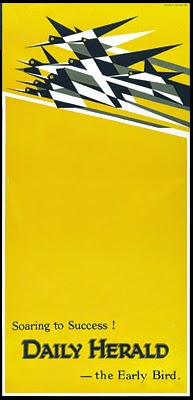The Golden Era of
Travel Posters
Maggie Merkin
ARTH 230.01
T. Long
The era
between the two world wars saw an unprecedented amount of artist innovation and prosperity in both Europe and North America, as artists began making a shift toward poster design and more graphic visual communication. Technology and the interest in the machine were at the
height of societal innovation, allowing for other advances in art and design,
as mechanical, machine-made, and industrial forms became an important influence
in design techniques and styles. Cubism (an avant-garde art movement in which
objects are analyzed, broken up, and reassembled in abstract forms) inspired a
new direction for pictorial images to follow. The term “art deco” (derived by
British art historian Bevis Hillier in the 60’s) is used to describe these
popular geometric works, as it signifies the attentiveness of artists to
graphics, architecture, and product design. Artists like Edward McKnight
Kauffer, A. M. Cassandre, and Paul Colin, were such artists that influenced and
inspired the cubist movement, as well as contributed to social and visual
communication, propaganda, and advertising. Kauffer, born on December 14, 1890
(-1954), in Great Falls, Montana, began his working career at age 12,
performing odd jobs to supplement his family income, as his father had
abandoned the family when he was 3. By the age of 16, he traveled to San Francisco to
work as a bookseller, taking art classes and painting on the weekends. In 1912
he stopped in Chicago to study at the art institute, and it was there that he
attended the first American exhibition of modern art. After attending this
exhibition, he decided to move to Europe to study and pursue art. Because of
this decision, I consider him to be bold and incredibly influential, in that he
took the risk of essentially dropping his schooling to pursue his artwork in
cubism/futurism. His artwork impressed and caught the attention of Winston
Churchill, an accomplishment that makes him even more impressive. A steady
stream of poster art and other graphic design assignments enabled him to apply
the principles of modern art and cubism to the problems of visual
communications. He was influential to this movement because he preferred to
advertise products using symbolic forms instead of money and sex (which some
advertisements/posters use today). A. M Cassandre, born in 1901, was also an
influential artist between the two world wars. He studied at the Ecole des
Beaux-Arts and the Academie Julian, when his graphic design career began at the
age of 22, designing posters for poster commissions to earn money for his art
and living expenses. He revolutionized French advertising using bold, simple
designs that emphasize two-dimensionality, using simplified planes of color and
reducing his subjects to iconographic symbols, and using geometric forms and
symbolic imagery in his poster designs. These works contributed to social
communication, in that his posters often were made for railways and steamship
lines, because of the exaggerated scale and monolithic qualities that signaled
strength and safety. He is particularly admirable, as his posters paved the way
for other artists to visually introduce modes of transportation (that were extremely
innovative in themselves) to the public, influencing modern
advertisements/products such as maps and info-graphics. Paul Colin was born in
1892 and started his career as a graphic designer in 1925, when he was asked to
become the graphics and set designer for the Theatre des Champs-Elysees in
Paris. He used strong, central images in his work that were animated by
creating double images, scale changes, different drawing techniques,
transparent images, and adding color shapes or bands to the side or behind the
central figure. He was particularly influential, as during his artistic career
and lifetime, he created dozens of powerful poster designs and works that
continued to be commissioned, printed, and posted throughout Paris in the
1970’s- his artistic style and contributions to poster design allowed him to become so popular, that, his work continued to impress and influence people. These artists were thus incredibly influential during the period between
the first and second world wars, as their posters and designs helped to
communicate and advertise propaganda, merchandise and products, and even
revolutionary travel services (such as trains and boats), to the general
public.









No comments:
Post a Comment